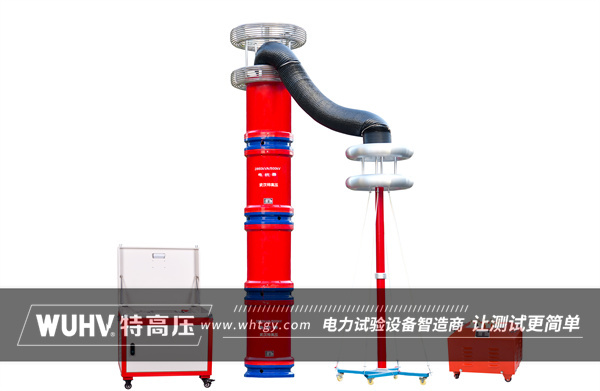The series resonanceunder Wuhan UHV can help many power workers conduct various power tests more conveniently.

The energy exchange between inductance and capacitance refers to the mutual conversion of electrical energy and magnetic or electric field energy between inductance and capacitance components and the power source in an AC circuit. This energy exchange is a common phenomenon in electronic circuits, especially playing an important role in circuits such as resonant circuits, filtering circuits, and oscillators.
The following is a detailed explanation of energy exchange between inductors and capacitors:
Energy exchange of inductors:
Inductance is a component that can store electrical energy and release it over time. When the inductor is powered on, due to the slow rate of current change in the circuit, a magnetic field will be generated inside the inductor, which will continuously change with the change of current.
If the power is turned off, the magnetic field will generate a reverse electromotive force through the inductor, causing the current to gradually decrease, and the magnetic field energy will be converted into electrical energy, thereby exchanging energy with the power source.
The energy exchange principle of inductance has a wide range of applications in electronic technology, such as transformers, inductively coupled oscillators, filters, and other circuits that extensively use inductance.
Energy exchange of capacitors:
A capacitor is a component that can store electrical energy and can also exchange energy with a power source in a circuit. When the voltage of the capacitor changes asynchronously with the power supply voltage, a certain amount of electrical energy will be stored inside the capacitor.
When the power supply voltage changes, the capacitance will also change accordingly. When the capacitor voltage is greater than the power supply voltage, the capacitor discharges to the power supply; On the contrary, it absorbs the electrical energy from the power source.
The principle of capacitive energy exchange is to store and release electrical energy through the action of an electric field. Capacitors also have a wide range of applications in electronic technology, such as filters, oscillators, inverters, and other circuits that cannot do without capacitor components.
Characteristics of energy exchange:
Inductors and capacitors are passive components in circuits that can convert energy between them. Inductance stores magnetic field energy, while capacitance stores electric field energy.
In communication circuits, inductors and capacitors undergo repeated charging and discharging processes, resulting in energy exchange with the power source. This energy exchange is periodic and does not substantially consume power (for pure capacitors and inductors).
The energy exchange process between inductance and capacitance is closely related to the frequency of the power supply. At a specific frequency, the circuit may reach a resonant state, where energy exchange reaches its maximum.
In summary, energy exchange between inductors and capacitors is a common phenomenon in electronic circuits. They store and release electrical energy through the action of magnetic and electric fields, thereby achieving energy exchange with the power source. This energy exchange has a wide range of applications in electronic technology and is an important factor that cannot be ignored in circuit design and analysis.



















